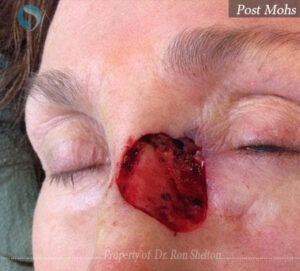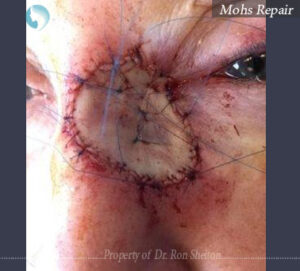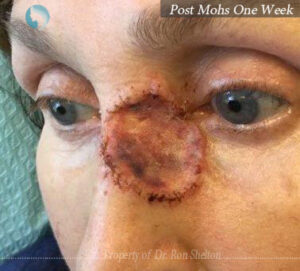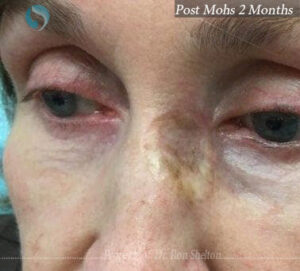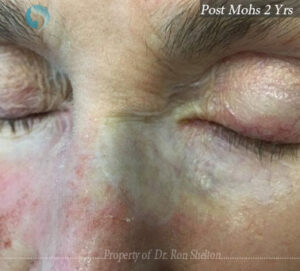A skin graft even taken from the exact area adjacent to the site of surgery changes color over time as it’s skin in a new area that has to redevelop blood flow. It becomes thinner, smoother, loses pores and becomes whiter usually. Rarely grafts become thicker from contraction and swelling, and in some cases darker than surrounding skin. Lasers can be used to improve the contour of the edge of the graft or its surface, and can be judiciously used for color improvement. In the case shown here no lasers were used, just time and with makeup it was barely noticeable at four weeks.
Above before and after patient photos are of Mohs surgery and Mohs procedure New York done by Dr Ron Shelton on an 84 years old woman’s nose. Skin cancers on the face are often removed using the Mohs technique. Once the cancer is removed, it is often a challenge on reconstructing the resulting repair without compromising the facial appearance.
Removing skin from one part of the body and using it to repair a defect is called skin grafting. The shape of the graft matches the defect. Usually the skin graft is taken from a skin area that best matches the color and thickness of the affected area. As the tissue heals, new blood vessels grow into the flap from the nasal side.
In the above patient’s case Dr Shelton has done the skin graft without distorting the shape of the nose. Check more before & after photos Mohs procedure in New York of Dr Shelton’s patients at the NYC Mohs gallery here >>
Back to Home Page: Mohs Skin Cancer Surgery New York NY
Page updated: Nov 2021

